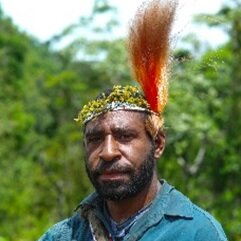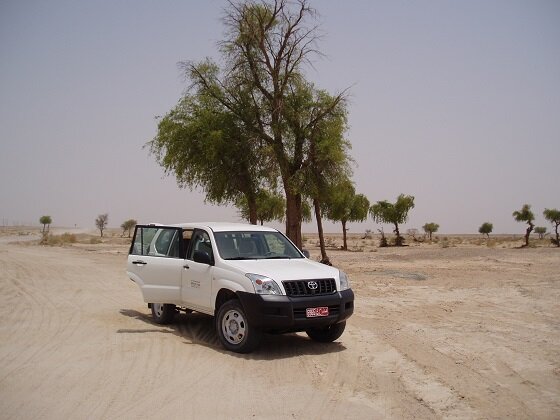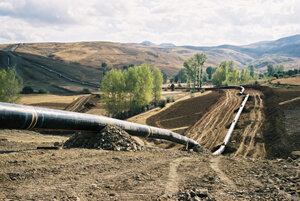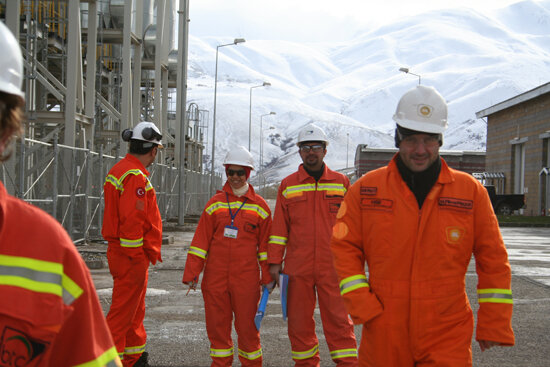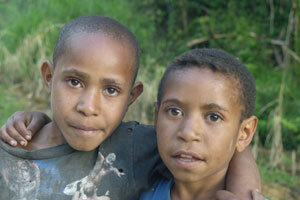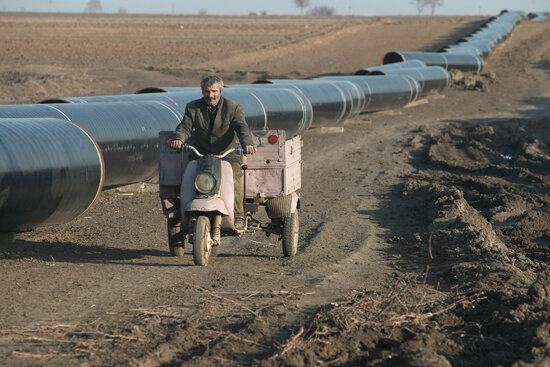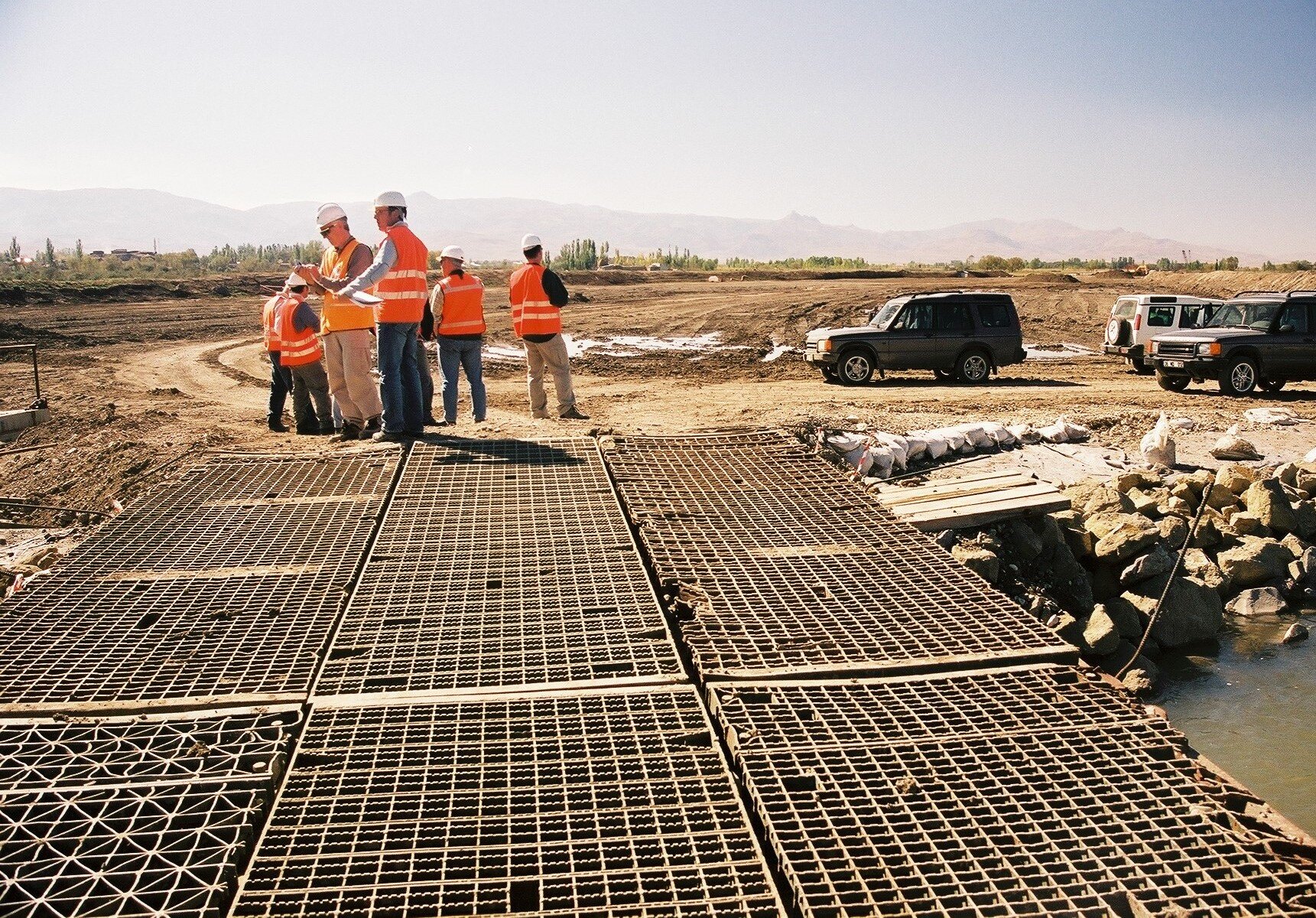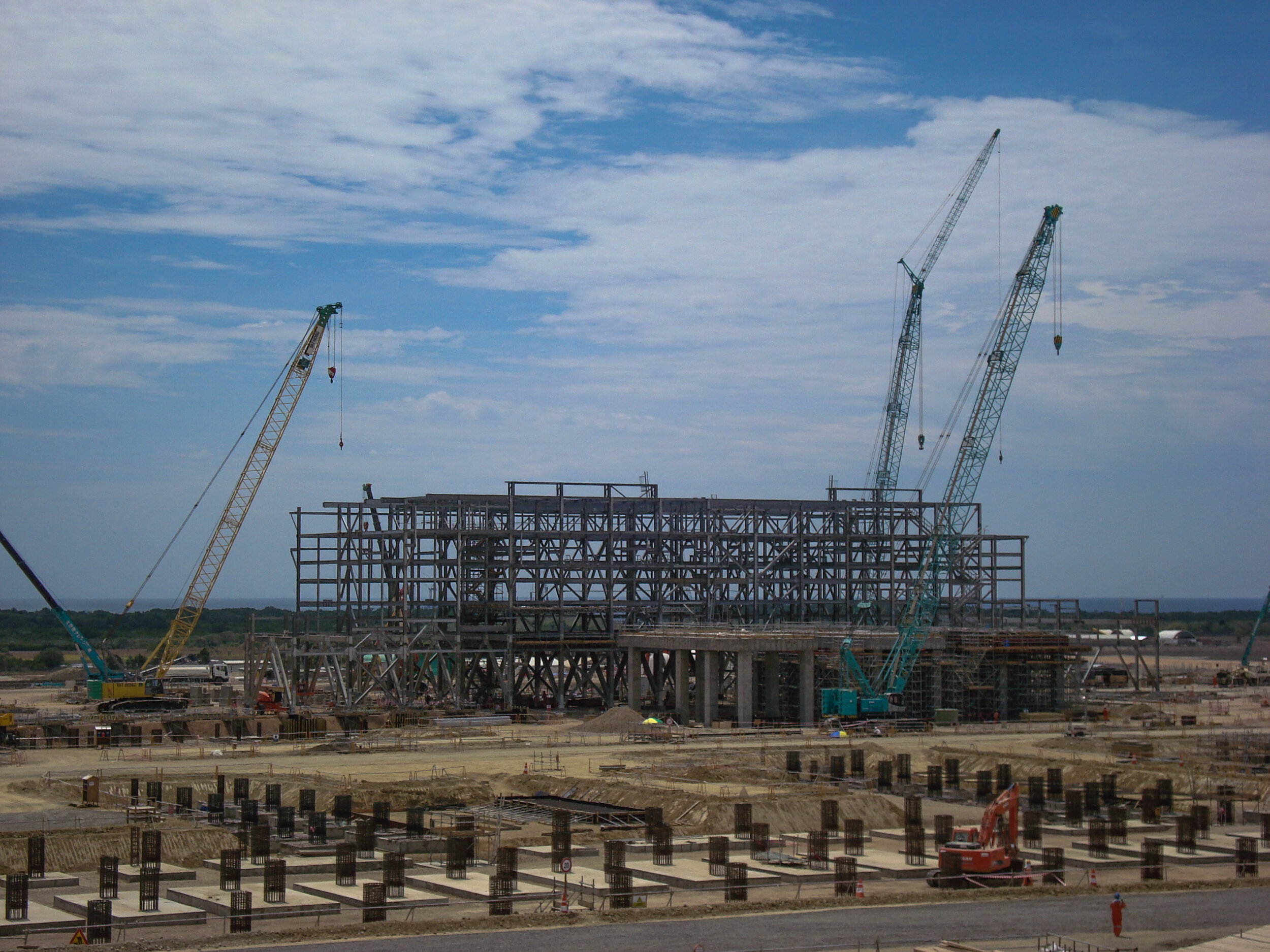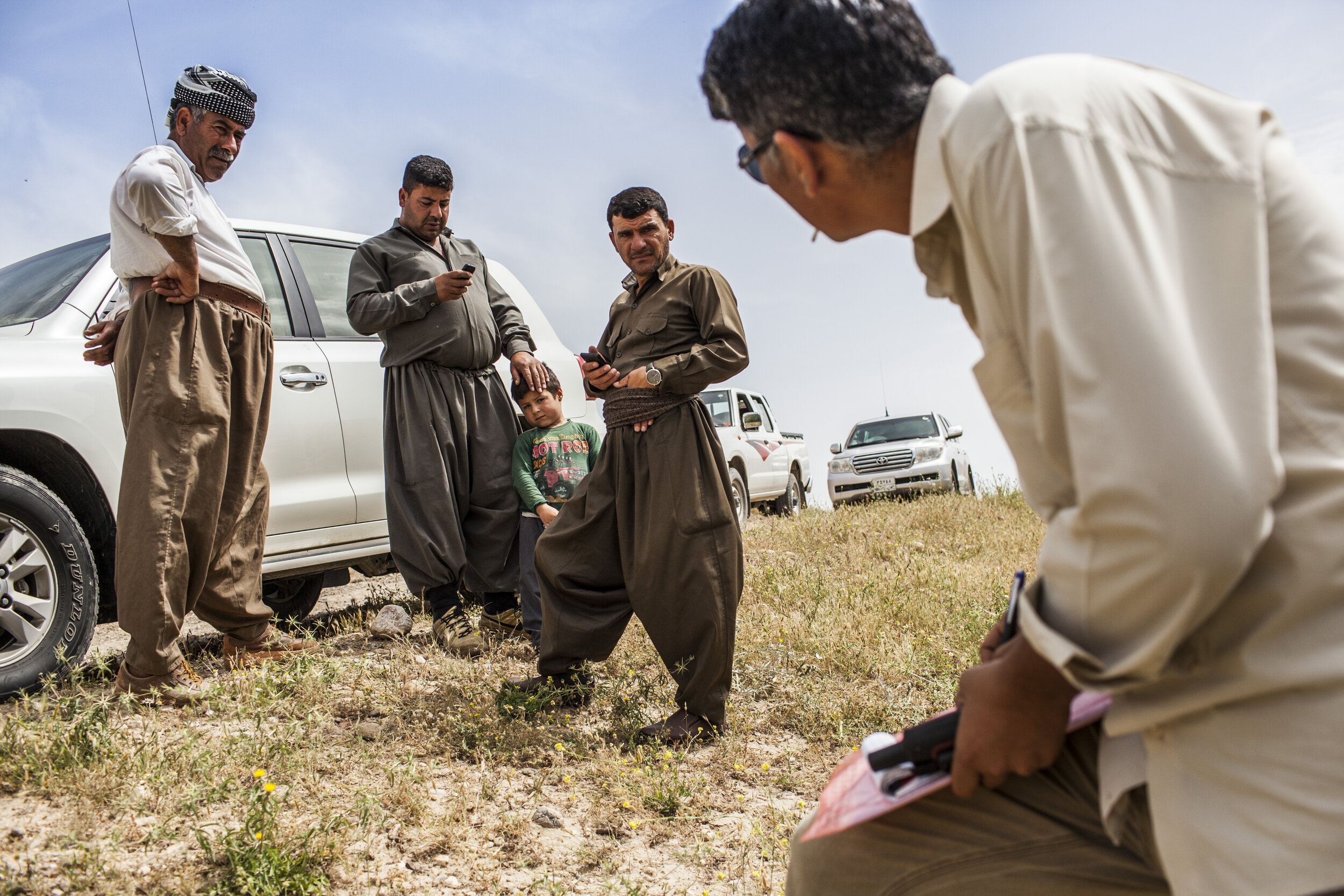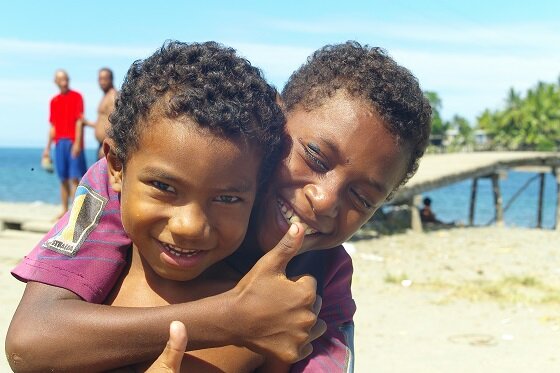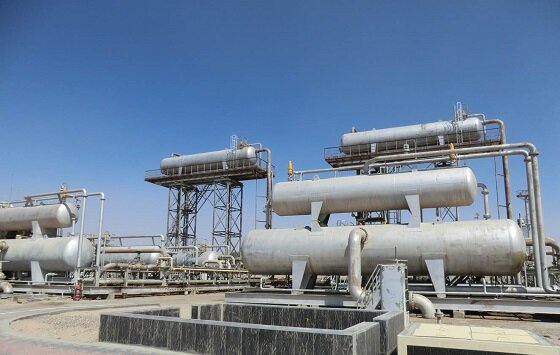The IDP Consulting team has worked on a number of the world's largest energy and mining projects from the Caspian, Caucuses and Middle East; to Asia, Papua New Guinea and Australia; and to Africa and South America.
Anadarko LNG (now Total E&P Mozambique Area 1, Lda)
Mozambique
Project overview
The project involves the development of an offshore resource with estimated recoverable resources in the range of 50 to 70+ Tcf for the purposes of onshore processing and export of up to 50 million tonnes of LNG per year.
IDP's role
Development of Contractor Environmental and Social Roadmap and Management Plans
Development of Project Industrial Relations Strategy
Facilitated development of Health, Safety and Security Roadmaps and Management Plans
Engagement with FEED Contractors on the latter for clarification purposes
Ongoing monitoring and management of contractors, with a focus on labour and community relations aspects
Ongoing strategic advice, particularly in relation to labour.
Australia Pacific LNG
Australia
Project overview
The Australia Pacific LNG project comprises the development of Australia Pacific LNG's coal seam gas fields, the construction of a gas transmission pipeline and the construction of an LNG facility and associated port infrastructure near Gladstone, Queensland, for export to international markets. The LNG facility has the potential to produce approximately 18 million tonnes per annum. The project required external finance. Australia Pacific LNG is the joint venture entity of parties Origin Energy Limited, ConocoPhillips and Sinopec Group.
IDP's role
Strategic reviews and assessments
Development of Lender strategy and initial Lender liaison
Development of Term Sheets.
BP Azeri-Chirag-Guneshli
Caspian Sea, Azerbaijan
Project overview
Azeri-Chirag-Guneshli (ACG) is a complex of six production platforms: Chirag 1, Central Azeri, West Azeri, East Azeri, Deepwater Gunashli, West Chirag; and two process, gas compression, water injection and utilities platforms, equipped with latest technologies. A sophisticated web of subsea pipelines was laid at the bottom of the Caspian Sea to transport oil from offshore to Sangachal terminal, near Baku. Sangachal is one of the biggest and most efficient terminals in the world, which can receive and process up to 1.2 million barrels of oil per day.
IDP's role
Environmental and Social Impact Assessment review
Lender Finance support.
BP Baku-Tbilisi-Ceyhan Pipeline
Azerbaijan, Georgia and Turkey
Project overview
The Baku–Tbilisi-Ceyhan (BTC) pipeline exports one million barrels of oil daily from the Azeri-Chirag-Gunashli field in the Caspian Sea to Ceyhan, a port on the Mediterranean Sea. It runs 1,768 kilometres from Baku in Azerbaijan and onwards through Georgia and Turkey. The $2.6 billion project took five years to plan and three further years to construct. First oil was pumped in 2005.
IDP's role
Commercial, legal and financial lead
Structured and negotiated the intergovernmental and host government support agreements and the principal commercial agreements underpinning the project
Developed and managed $2.6 billion financing process
Represented environmental and social issues in a multi-disciplinary team in early BTC route selection in Georgia and Turkey
Structured, drafted and negotiated (with Amnesty International) the first agreement directly binding a multinational company to international human rights obligations
Managed the preparation of the lender environmental and social disclosure documentation package, collectively amounting to over 11,000 pages and including key documents such as the Environmental and Social Action PlanDeveloped the concept of contractor control plans to bridge the gap between theory and practice
Managed all interfaces between BTC, its associated oil development, the lenders and their environmental and social consultants
Managed biorestoration and erosion risk monitoring using GIS and high resolution satellite imagery
Managed the preparation of quarterly environmental and social reports to the lenders
Structured, drafted and negotiated (with the Georgian government) the security protocol and grant agreements that de-bottlenecked the suspension of construction on BTC and Southern Caucasus Pipeline (October 2004)
Structured, drafted and negotiated the intergovernmental agreement between the Azerbaijan Republic and the Republic of Kazakhstan supporting the transit shipment through the BTC pipeline of oil from Kazakhstan’s Kashagan field.
ESIA development and review
In-country ESIA management (Turkey)
Lender Finance support
Baseline data collection survey design
Development of Project Standards
Development of Construction and Operations E&S Management Plans
Post construction monitoring
Conducted a 6 month Lessons Learned exercise involving Corporate and contracting entities, and IFC.
BP Khazzan
Oman
Project overview
Block 61 is operated by BP Oman (60%) in partnership with Oman Oil Company Exploration and Production (40%). The full field development of the Khazzan Project will involve a drilling program of around 300 wells over 15 years to deliver plateau production of one billion cubic feet (or 28.3 million cubic meters) of gas per day. This volume is equivalent to an increase of around a third of Oman’s total daily gas supply. Construction work on Khazzan has commenced and first gas is expected in late 2017.
The development of the tight gas reservoirs at Khazzan is a significant technical challenge, owing to the low porosity of the reservoir rock. As one of the world’s leading specialists in the production of tight gas, BP is applying innovative technology to unlock this potential, drilling horizontal wells and using hydraulic fracturing technologies to stimulate production.
IDP's role
Baseline and ESIA scoping studies
International regulatory reviews
Development of Project Standards.
BP Rumaila Oilfield
Iraq
Project overview
In 2009, BP became the first international oil company to return to Iraq after a period of 35 years. Between 2003 and 2006, BP had conducted a technical evaluation of the Rumaila field with the Ministry of Oil and in 2009, BP and PetroChina were awarded a technical service contract to increase production at Rumaila, in partnership with the South Oil Company (SOC). Today, BP, PetroChina and SOC are working in partnership to develop Rumaila, the second largest field in the world, estimated to have around 20 billion barrels of recoverable oil remaining.
IDP's role
Management of environmental and social baseline assessments
Scoping studies and impact assessments
Construction contractor environmental and social management
Waste management studies and ongoing input into management of operating waste management centre
Ongoing environmental and social input into operational oilfield and rehabilitation issues, including, cultural heritage management, air quality monitoring, compliance management, oil spill response planning, water supply issues and remediation management.
BP West Bengal Coal Bed Methane
India
Project overview
This project involved the drilling of up to 15 exploration wells in west Bengal. The landscape is characterized by highly populated agricultural area (rice paddies).
IDP's role
Environmental Labour and Community Strategy development
Scoping studies
ESIA preparation management and review.
ExxonMobil PNG LNG Project
Papua New Guinea
Project overview
The Papua New Guinea Liquefied Natural Gas project is an integrated development that includes gas production and processing facilities in the Southern Highlands and Western Provinces of Papua New Guinea, including liquefaction and storage facilities with capacity of 6.9 million tons per year. Over 700 kilometres (450 miles) of pipelines connect the facilities.
The investment for the initial phase of the project, excluding shipping costs, is estimated at US$19 billion. Over the life of the project, it is expected that over nine trillion cubic feet of gas will be produced and sold.
IDP's role
Gap Analysis and Action Plan (EIS vs IFC Performance Standards)
Lender finance due diligence support
Development of Project Standards
Development of Construction Environmental and Social Management System and supporting Social Management Plans
Lender Interface Co-ordination
Development and implementation of contractor monitoring and reporting systems
Development and implementation of Industrial Relations Strategy for the Project
Management of EPC Contractor social compliance
Preparation and production of Lender E&S Quarterly, Semi-annual and Annual Reports
Preparation of E&S Quarterly Reports for PNG government
Coordinated the development of the Production E&S Management System and associated plans
Coordinated the Harvard University Case Study on the Project
Facilitated two lessons learned workshops
Technical support in updating the Biodiversity Strategy, Biodiversity Implementation and Monitoring Plan, and Biodiversity Protocols.
ExxonMobil PNG LNG Expansion Project
Papua New Guinea
Project overview
The PNG LNG Joint Downstream Development Project represents the downstream component of ExxonMobil’s PNG Expansion Project and TOTAL’s Papua LNG project that will result in the expansion of the existing LNG Plant through the addition of three new LNG processing trains (Train 3, Train 4 and Train 5). This will double the capacity of the LNG Plant to approximately 16 million tonnes per annum (mtpa).
IDP's role
Lender engagement strategy support
Scoping and development of Lender-compliant documentation
In-house training regarding Lender requirements.
ExxonMobil P'nyang Project
Papua New Guinea
Project overview
The Project aims to commercialise natural gas resources located in the Western Province of Papua New Guinea and will comprise gas production wells, gas gathering systems, access tracks, a gas processing plant and associated infrastructure, as well as gas and condensate export pipelines. The Project will be a component of the PNG LNG Project.
IDP's role
Technical review of the Environmental Impact Statement
Technical support for the development of the Environmental and Social Management Plan and supporting documents
ExxonMobil Rovuma LNG Development
Mozambique
Project overview
The Area 4 Exploration and Production Concession, operated by Mozambique Rovuma Venture S.p.A., and the Area 1 Exploration and Production Concession, operated by Anadarko Moçambique Área 1 Limitada (AMA1) are located in the Rovuma Basin of Northern Mozambique and comprise multiple hydrocarbon reservoirs.
The Rovuma LNG Project envisages the construction of, inter alia, two LNG trains with a nominal liquefaction capacity of 7.6 million tons per annum (MTA) per train (nominal 15.2 MTA in total).The gas will be collected in subsea pipelines and routed to the onshore LNG plant, where hydrocarbon liquid (condensate) and water phases will be separated from the gas stream at the inlet separation facilities. The gas will form the feedstock for the LNG production and for the domestic gas facilities.
IDP's role
Assessment of gaps between EIA, management plans and associated documents against IFC Performance Standards
Development of Gap Closure Plan
Development of a Project Standards document
Development of Company E&S Management System, Company E&S Management Plans and E&S Requirements for Contractors documents for inclusion in EPC Invitation To Tender materials
Development of Lender engagement strategies and due diligence support
Technical assessments (e.g. Conflict Analysis) and support including Biodiversity Strategy, Residual Impact Assessment, Biodiversity Offset Strategy, Pre-feasibility Offset Assessment, Harmonised Critical Habitat Assessment and development of related plans (Biodiversity Action Plan, Biodiversity Monitoring & Evaluation Plan).
Hunt Oil Peru LNG
Peru
Project overview
In June 2010, Hunt Oil Company, along with PERU LNG consortium members SK Corporation, Repsol YPF and Marubeni, inaugurated the first gas liquefaction plant to be built in South America. The 4.45 million tons per year gas liquefaction plant, located 170 kilometres south of Lima, along with a 408-kilometer pipeline built across the Andes and a marine terminal on the coast of the Pacific Ocean at Melchorita, together form what is now known as the PERU LNG project. The culmination of this project positions Peru as a leader in the liquefied natural gas industry in South America, and the revenue it generates will provide further development and growth for the country and its people for decades to come.
IDP's role
Strategic reviews and assessments
Development of Project Standards and management plan framework
Lender documentation review and disclosure.
Premier Oil Sea Lion Project
Falklands
Project overview
The Sea Lion complex is estimated to contain c. 520 mmbbls which will be developed in two phases.
Phase 1, in which Premier has a 60% operated interest, will recover 220 mmbbls of reserves in the north east and north west of PL032 over 20 years. It will be developed utilizing a leased FPSO with 18 subsea wells from a single drill center. As at year end 2015, Premier estimated that gross capex to first oil for Sea Lion phase 1 would be $1.8 bn, reflecting significant cost reductions.
IDP's role
Facilitate an ENVID and write a summary report.
Rio Tinto Simandou Iron Ore Project
Guinea
Project overview
The Simandou project is a world class iron ore mining development located in the south-east of Guinea, West Africa. It is the largest integrated mining and infrastructure project ever developed in Africa and consists of a 95 million tonnes per year capacity iron ore mine, a new 650 km long railway running west across the country to connect the mine to the Guinean coast and a new deep-water south of Conakry. The mine will develop two iron ore deposits covering approximately 13 square kilometres of the southern part of the Simandou Range.
IDP's role
Development of Environmental and Social Management Plans.
Rio Tinto Oyu Tolgoi Copper-Gold Mine
Mongolia
Project overview
The Oyu Tolgoi project is a joint venture between Rio Tinto, Ivanhoe Mines and the Government of Mongolia to develop one of the world's largest known and unexploited copper-gold deposits. Located in the sparsely populated southern Gobi region of Mongolia, the mine construction workforce peaked at almost 18,000 in December 2011. Rio Tinto is the operator. Oyu Tolgoi is seeking external project financing, with the lender group including IFC, EBRD, US EXIM, EDC and EFIC.
IDP's role
Advice on the process and interaction with lenders
Review of Environmental and Social Impact Assessment
Development of the Environmental and Social Impact Assessment Non-Technical Summary
Biodiversity studies planning
Development of project Fact Sheets.
Tengizchevroil Future Growth Project
Kazakhstan
Project overview
Tengizchevroil (TCO)’s Future Growth Project is a joint venture partnership formed in 1993 to develop the Tengiz oilfield in western Kazakhstan. Current partners in TCO include Chevron (50%), KazMunaiGas (KMG) (20%), ExxonMobil (25%) and LukArco (5%). The Tengiz oilfield area includes the ‘super giant’ Tengiz field, the smaller Korolev field and several exploratory prospects. The Tengiz and Korolev fields have potential for an estimated 750 million to 1.1 billion metric tonnes (six billion to nine billion barrels) of recoverable oil. Tengiz is one of the world's deepest developed super giant oil fields, with the top of the reservoir at 3,850m. Crude production in 2013 was 27 million metric tonnes (216 million barrels).
TCO has operated oil and gas production facilities at Tengiz since 1993, and since that time has executed a number of expansion and upgrade developments.
The Future Growth Project is the next planned major expansion of the existing facilities and is intended to increase crude production by 12 million metric tonnes per year.
IDP's role
Strategic reviews and assessments
ESHIA Scoping study
ESHIA development management and review
Environmental, Labour and Community Management Plan development
Industrial Relations Strategy Development and secondment of personnel into in country IR team.
Total Papua PNG Project
Papua New Guinea
Project overview
The PRL-15 Joint Venture, comprising TOTAL E&P PNG Limited, ExxonMobil and Oil Search Limited, is planning the development of the Elk-Antelope gas field, Gulf Province, Papua New Guinea. The gas field is located in a remote area, approximately 120 km inland from Kerema, the capital of Gulf Province, and 340 km northwest of the country’s capital city, Port Moresby.
The Project will comprise upstream production well development and associated infrastructure at the gas field within PRL-15, construction of an upstream Central Processing Facility and delivery of gas and condensate via onshore and offshore export pipelines to the existing PNG LNG Plant at Caution Bay, Central Province, 20 km northwest of Port Moresby. The design life for the Project will be 25 years.
IDP's role
In-house training regarding Lender requirements
Development of a Labour and Industrial Relations system
IFC Performance Standards awareness training
Development of a Land Access and Resettlement Framework.
Tullow, CNOOC, Total - Lake Albert Basin Development
Uganda
Project overview
China National Offshore Oil Corporation (CNOOC), Total E&P Uganda Ltd (Total) and Tullow Uganda Operations Pty Ltd (Tullow) are planning to develop three oilfield blocks within the Albertine Graben. Exploration Area (EA) 1 (Total) and EA2 (Tullow) are located adjacent to one another, while EA3 (CNOOC) is located separately to the south. The Lake Albert Development Plan Group (LADPG) represents the interests of the three companies.
IDP's role
Development of Environmental and Social Management Plans
Training on IFC Performance Standards and Equator Principles (Corporate, African regional staff - Kampala and Lake Albert)
Gap Analysis between IFC Performance Standards and Corporate plans and policies of the Partner companies and Country environmental and social plans and policies
Development of an Environmental, Labour and Community Strategy.
Tullow Oil Kenya Export Pipeline
Uganda
Project overview
The objective of the proposed export pipeline and marine loading facility on the coast in Kenya is to transport crude oil from developments in Uganda and Kenya to the global oil market. The buried pipeline will transport the oil to a junction terminal located on the Indian Ocean coastline of Kenya and from there via an offshore pipeline to a single point mooring facility for offloading and export.
IDP's role
Provision of pipeline strategic environmental and social advisory services
Preparation of pipeline environment, labour & community organization staffing structure
Development of Stakeholder Engagement Strategy
Development of Land Acquisition Strategy
ESHIA studies scope of works review.


